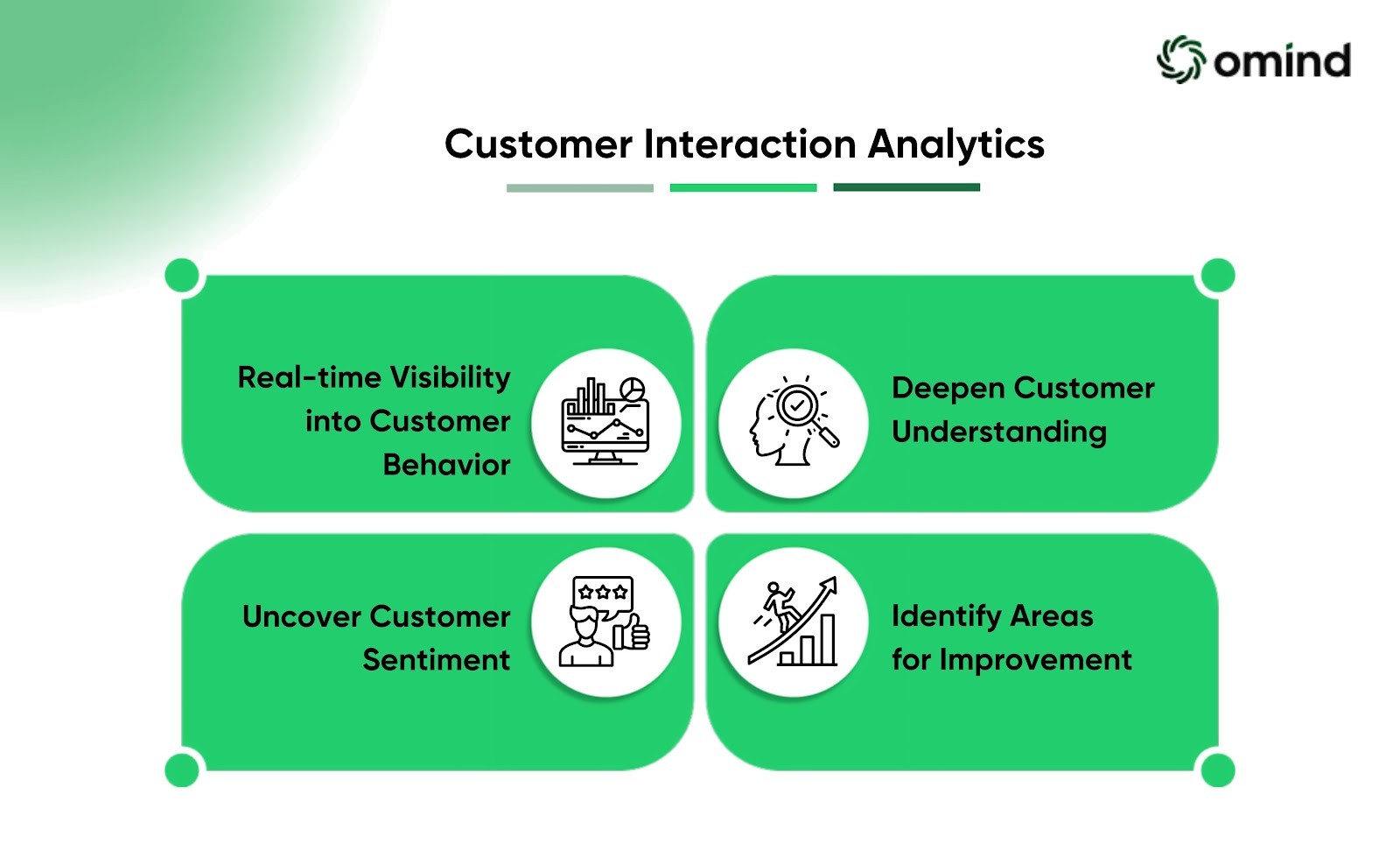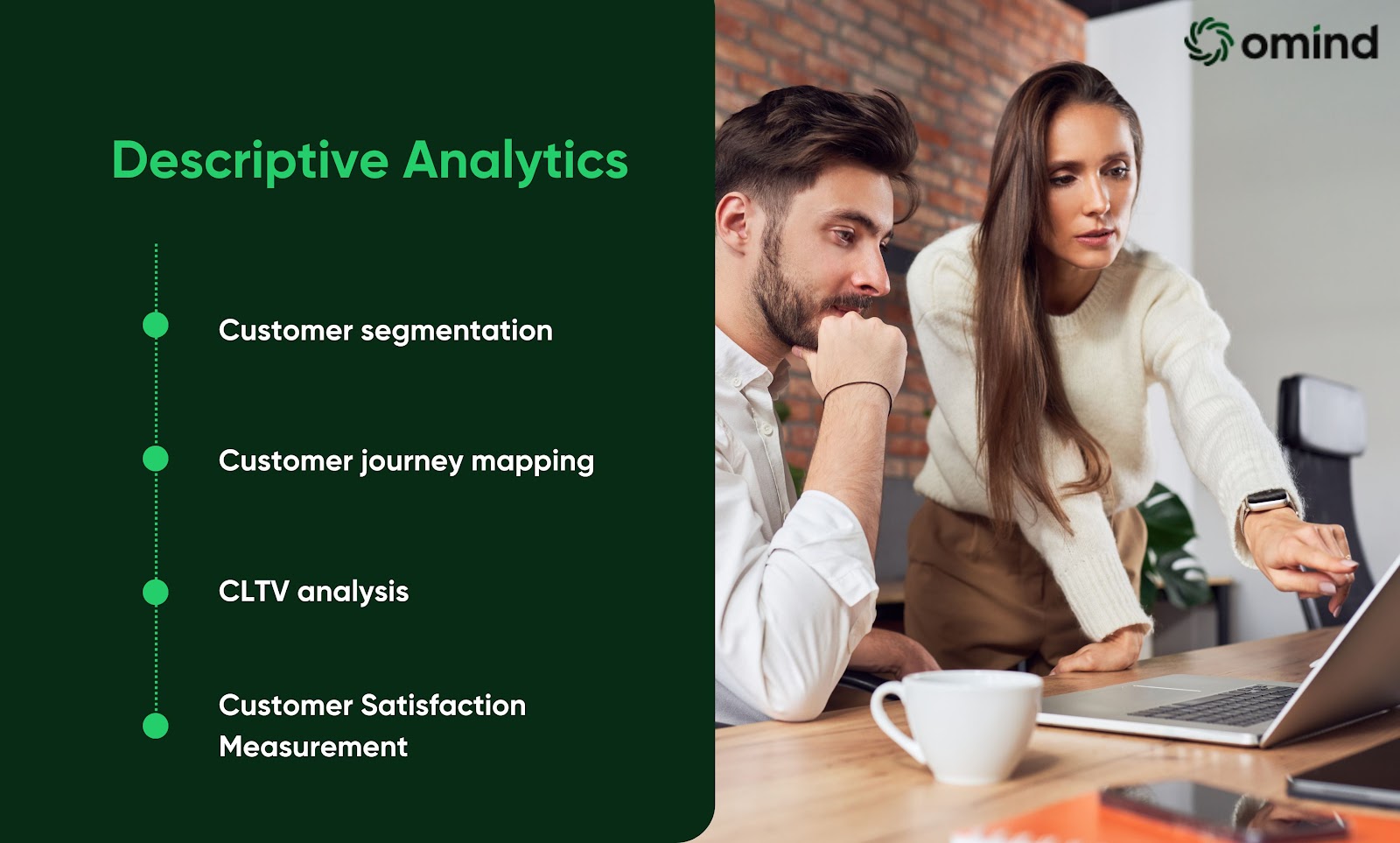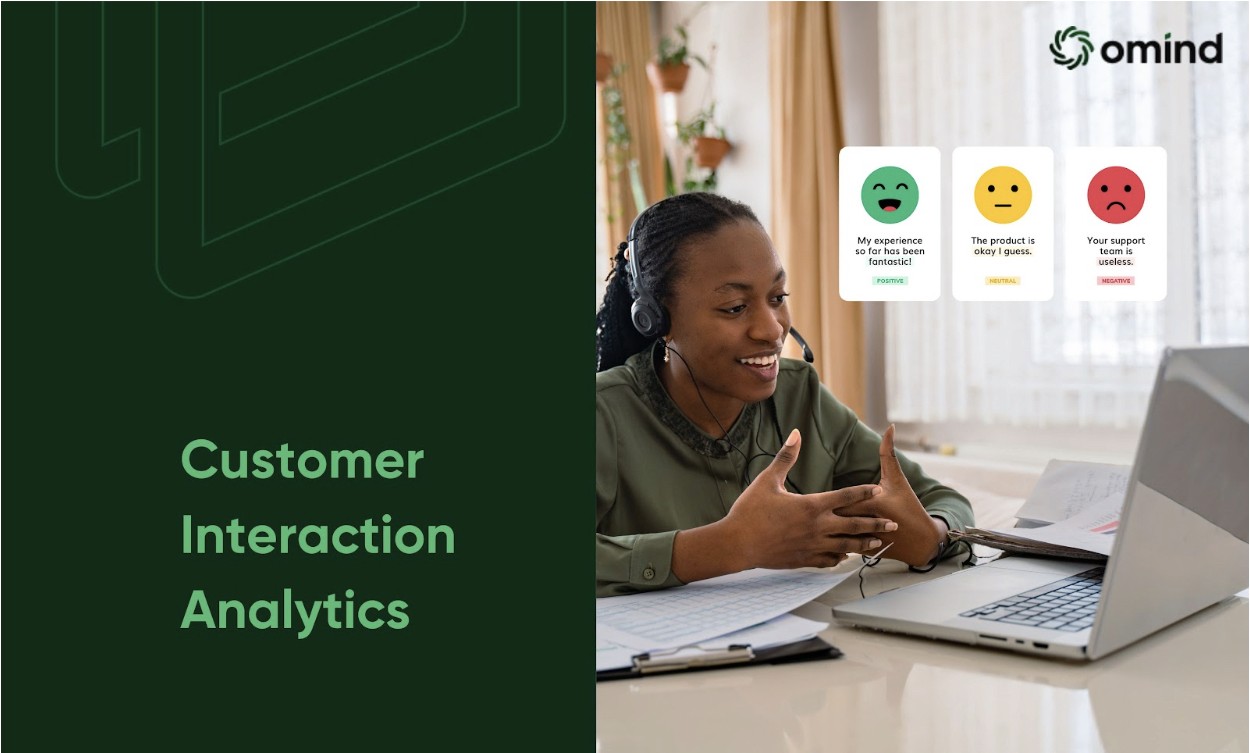Customer Interaction Analytics (CIA) is a systematic examination of customer interactions across various channels. Using CIA involves collecting, processing, and analyzing customer data to extract meaningful insights about their behavior, preferences, and sentiments. CIA aims to identify trends, measure customer satisfaction, improve customer experiences, and ultimately, drive up the growth of a business.
This article will serve as a guide to understanding CIA, its various use cases, methodologies and best practices.
The Impact of Customer Interaction Analytics Across Business Functions
CIA holds immense value across diverse business contexts. Let’s take a look at the various areas within business operations that CIA can be applied to.
Customer Service
Through examining customer interactions, businesses can identify recurring issues, measure customer satisfaction, and pinpoint areas for process improvement. CIA allows service teams to develop targeted training programs, optimize call handling procedures, and implement self-service options. Additionally, by looking into agent performance metrics, businesses can recognize top performers, identify training needs, and optimize staffing levels.
Marketing
CIA provides invaluable insights for marketing teams. By looking at customer interactions, marketers can create highly targeted customer segments, personalize marketing messages, and measure the effectiveness of campaigns with greater precision. CIA helps optimize marketing spend, identify high-value customer segments, and predict customer churn. By understanding customer sentiment towards marketing initiatives, businesses can refine their strategies accordingly.
Product Development
CIA is a powerful tool for product development and innovation. By analyzing customer feedback and behavior, product teams can identify unmet customer needs, prioritize feature development, and assess product performance. CIA helps uncover product usage patterns, identify pain points, and measure customer satisfaction with specific product features.
Sales
CIA can significantly enhance sales performance. By analyzing customer interactions with sales teams, businesses can identify sales opportunities, optimize sales processes, and improve sales forecasting. CIA helps uncover customer buying patterns, identify high-potential leads, and measure the effectiveness of sales enablement programs. Moreover, by understanding customer objections and challenges, sales teams can develop targeted responses and improve closing rates.
Finance
While often overlooked, CIA also offers valuable insights for finance departments. By analyzing customer payment patterns, businesses can identify potential risks, optimize collections processes, and reduce bad debt. CIA helps uncover trends in customer spending, measure customer lifetime value, and assess the financial impact of customer service interactions. This data lets finance teams make solid decisions and contribute to overall business profitability.
Key Benefits of Customer Interaction Analytics

Real-time visibility into customer behavior: Continuously monitor customer interactions to quickly identify emerging trends, proactively address customer concerns, and capitalize on new opportunities.
Deepen customer understanding: Develop comprehensive customer profiles by meticulously analyzing interactions. Gain insights into behaviors, preferences, and pain points to tailor offerings and experiences precisely.
Uncover customer sentiment: Gauge emotional responses to products, services, and interactions. Use this information to improve customer satisfaction and loyalty.
Identify areas for improvement: Analyze interaction patterns to pinpoint operational inefficiencies, product flaws, or service gaps. Implement targeted solutions to enhance overall performance and customer experience.
How Does Customer Interaction Analytics Work?
Gather customer interaction data: Collect raw data from various channels including phone calls, emails, chats, social media, and web interactions.
Data structuring: Organize and format collected data into a structured format suitable for analysis: Cleaning, standardizing, and transforming raw data into a usable form.
Apply advanced analytics tools: Utilize sophisticated analytics tools and algorithms to uncover hidden patterns and trends within the structured data.
Extract actionable insights: Transform processed data into meaningful insights that can inform business decisions and strategies. This involves identifying correlations, identifying key metrics, and understanding customer behaviors.
Categories of Customer Interaction Analytics
To gain deeper insights and unlock the full potential of customer interaction data, businesses employ a variety of analytical approaches.
Descriptive Analytics

Descriptive analytics provides a foundational understanding of customer behavior by summarizing historical data. It answers fundamental questions about what happened. Key techniques include:
Customer segmentation: Grouping customers based on shared characteristics to identify distinct segments with unique preferences.
Customer journey mapping: Visualizing the customer's interaction with a business across various touchpoints to identify opportunities for improvement.
Customer lifetime value (CLTV) analysis: Evaluating the long-term profitability of individual customers to prioritize customer retention efforts.
Customer satisfaction measurement: Assessing customer satisfaction levels through metrics like customer satisfaction scores (CSAT) and net promoter scores (NPS).
Diagnostic Analytics
Diagnostic analytics goes into the reasons behind observed trends and patterns uncovered by descriptive analytics. It focuses on understanding the "why" behind customer behavior. Key techniques include:
Root cause analysis: Identifying the underlying causes of customer issues or problems to implement effective solutions.
Cohort analysis: Comparing customer groups with similar characteristics to understand differences in behavior and preferences.
Customer feedback analysis: Analyzing customer feedback (surveys, reviews, social media) to identify recurring themes and areas for improvement.
Benchmarking: Comparing performance metrics against industry standards or competitors to identify strengths and weaknesses.
Predictive Analytics
Predictive analytics uses historical data and statistical modeling to forecast future customer behavior and trends. It enables businesses to anticipate customer needs and make proactive decisions. Key techniques include:
Customer churn prediction: Identifying customers at risk of leaving to implement retention strategies.
Customer purchase prediction: Forecasting future product purchases to optimize inventory management and marketing campaigns.
Customer sentiment analysis: Predicting customer sentiment towards products, services, or brand to proactively address potential issues.
Customer lifetime value prediction: Forecasting the long-term value of customers to prioritize customer acquisition and retention efforts.
Prescriptive Analytics
Prescriptive analytics goes beyond prediction by providing recommendations and actionable insights to optimize business decisions. It uses advanced analytical techniques to suggest the best course of action. Key techniques include:
Customer segmentation optimization: Identifying the most profitable customer segments and tailoring marketing and sales efforts accordingly.
Price optimization: Determining optimal pricing strategies to maximize revenue and profitability.
Inventory optimization: Predicting product demand to optimize inventory levels and reduce stock outs or overstocks.
Customer journey optimization: Identifying opportunities to improve the customer experience by streamlining processes and removing friction points.
By effectively utilizing these types of analytics, businesses can gain a comprehensive understanding of their customers, make informed decisions, and ultimately drive business growth.
Analytics Tools Used in Customer Interaction Analytics
Phonetics Analytics: Analyze the acoustic properties of speech to uncover information about the speaker, such as age, gender, or emotional state.
Desktop Analytics: Correlate customer interactions with agent desktop activities to optimize processes and identify areas for improvement in agent workflows.
Sentiment Analysis: Determine the emotional tone of customer interactions, whether through text or speech, to gauge customer satisfaction and identify potential issues.
Speech-to-Text Analytics: Convert spoken language into written text for further analysis, enabling text analytics techniques to be applied to audio interactions.
Text Analytics: Extract meaning and insights from text-based customer interactions, including emails, chats, and social media posts.
Predictive Analytics: Employ statistical models and ML algorithms to forecast future customer behavior, preferences, and trends. This enables businesses to anticipate customer needs and make proactive decisions.
Omnichannel Customer Interaction Analytics
In today's interconnected world, customers engage with businesses through a multitude of channels, including websites, mobile apps, social media, email, and phone. To gain a comprehensive understanding of the customer journey, businesses must adopt an omnichannel approach to customer interaction analytics.
By integrating data from various channels, multichannel analytics creates a unified view of the customer, providing a 360-degree perspective. This holistic view allows businesses to:
Deliver consistent experiences: Ensure consistent interactions across all channels, meeting customer expectations at every level.
Identify cross-channel patterns: Uncover customer behaviors and preferences across different channels to optimize marketing and sales efforts.
Personalize interactions: Tailor messages and offers based on the customer's overall interaction history, enhancing customer engagement.
Improve customer satisfaction: Identify pain points and areas for improvement across the customer journey, leading to increased satisfaction and loyalty.
Measure the impact of marketing campaigns: Evaluate the effectiveness of marketing efforts across different channels to optimize resource allocation.
Challenges and Solutions in Customer Interaction Analytics

Effective CIA hinges on setting clear business objectives and aligning data collection and analysis accordingly. Extracting value from customer interaction data is not without its hurdles. Businesses often grapple with the following challenges:
Data Silos: Customer data is often scattered across various systems and departments, making it difficult to create a unified view of the customer.
Data Standardization: Inconsistent data formats and definitions across different sources hinder data analysis and comparison.
Data Accuracy: Errors, inconsistencies, and missing data can compromise the reliability of insights.
Data Completeness: Incomplete data sets can limit the scope of analysis and impact the accuracy of findings.
Data Volume: The sheer volume of customer interaction data can overwhelm traditional analysis methods, requiring advanced tools and techniques.
Data Visualization: Effectively communicating complex insights through visualizations can be challenging, requiring specialized skills and tools.
Data Protection: Safeguarding sensitive customer information is paramount to maintain trust and comply with regulations.
Data Privacy Compliance: Adhering to data privacy laws and regulations (e.g., GDPR, CCPA) is essential to avoid legal and reputational risks.
Overcoming Challenges
To address these challenges, organizations should:
Implement a Customer Data Platform (CDP): Unify customer data from various sources into a single platform for a comprehensive view.
Establish Data Governance: Implement data quality standards, data cleaning processes, and data validation procedures to ensure data accuracy and consistency.
Invest in Advanced Analytics Tools: Utilize sophisticated analytics tools and techniques to handle large volumes of data and extract meaningful insights.
Prioritize Data Visualization: Employ effective data visualization techniques to communicate complex findings clearly and concisely.
Strengthen Data Security: Implement robust data security measures to protect customer information and comply with privacy regulations.
Conclusion
While challenges exist, the rewards of effective CIA are substantial. By embracing this discipline and overcoming obstacles, businesses can position themselves for long-term success in an increasingly competitive marketplace.
If you’d like a helping hand when it comes to understanding your customers, Omind is your answer. Omind uses the power of AI in our conversational platform that helps you gain the best insights possible. To see how our platform works, schedule a demo today.
AUTHOR
Team Omind
Empowering Businesses with Unified Customer Experience Platform, Leveraging Advanced AI and Intelligent Automation
PRODUCT
Unified CXM
Share LINK
Related Blogs




